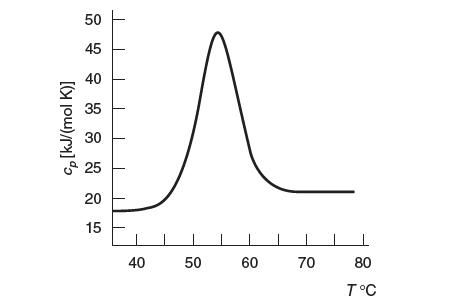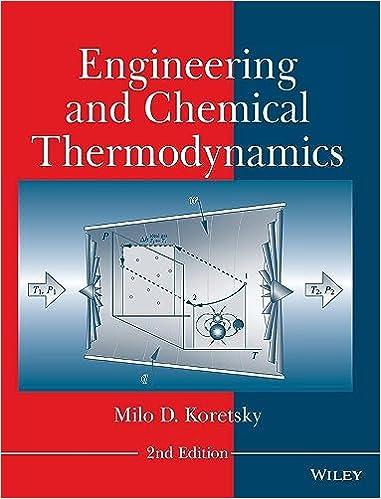Approximately half the dry mass of the human body consists of proteins. The backbone of a protein
Question:
Approximately half the dry mass of the human body consists of proteins. The backbone of a protein is a long polypeptide chain. In its natural or “native” state, the protein folds back on itself and is held together by a large number of intramolecular interactions, which include van der Waals interactions and hydrogen bonding (which we will discuss further in Chapter 4). The resulting structure formed by the protein is important for its function. Under conditions in which the interactions are overcome, the protein unfolds and becomes “denatured.”
The heat capacity of a protein in solution can be measured using a system similar to the one schematically shown in Figure 2.10b. A plot of heat capacity versus temperature for a protein is shown in the following fi gure.
Answer the following questions:
(a) Physically explain, where is the protein in its native state where is it denatured; what is the cause of the “hump”?
(b) Estimate the enthalpy change associated with the denaturation process, Δhd. Explain what physical process this number represents.
(c) What would cP versus T look like if denaturation occurred in a two-step process?
Step by Step Answer:





